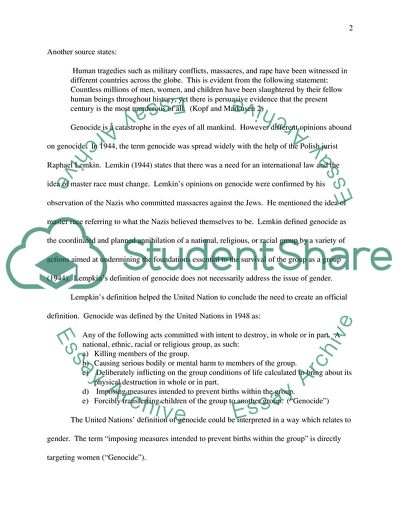Cite this document
(Genocide and Gender Essay Example | Topics and Well Written Essays - 4000 words, n.d.)
Genocide and Gender Essay Example | Topics and Well Written Essays - 4000 words. Retrieved from https://studentshare.org/gender-sexual-studies/1703397-editing-how-important-do-you-consider-gender-to-be-in-thinking-about-genocide-given-that-it-is-a-crime-conventionally-understood-in-terms-of-race
Genocide and Gender Essay Example | Topics and Well Written Essays - 4000 words. Retrieved from https://studentshare.org/gender-sexual-studies/1703397-editing-how-important-do-you-consider-gender-to-be-in-thinking-about-genocide-given-that-it-is-a-crime-conventionally-understood-in-terms-of-race
(Genocide and Gender Essay Example | Topics and Well Written Essays - 4000 Words)
Genocide and Gender Essay Example | Topics and Well Written Essays - 4000 Words. https://studentshare.org/gender-sexual-studies/1703397-editing-how-important-do-you-consider-gender-to-be-in-thinking-about-genocide-given-that-it-is-a-crime-conventionally-understood-in-terms-of-race.
Genocide and Gender Essay Example | Topics and Well Written Essays - 4000 Words. https://studentshare.org/gender-sexual-studies/1703397-editing-how-important-do-you-consider-gender-to-be-in-thinking-about-genocide-given-that-it-is-a-crime-conventionally-understood-in-terms-of-race.
“Genocide and Gender Essay Example | Topics and Well Written Essays - 4000 Words”, n.d. https://studentshare.org/gender-sexual-studies/1703397-editing-how-important-do-you-consider-gender-to-be-in-thinking-about-genocide-given-that-it-is-a-crime-conventionally-understood-in-terms-of-race.


